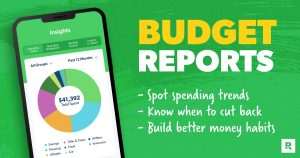The Federal Reserve recently decided to hold interest rates steady at 5.25% to 5.5%. While inflation remains elevated — with the Consumer Price Index at 3.3% and core Personal Consumption Expenditures Price Index at 2.7%) — keeping rates unchanged can impact your finances in various ways.
An Overview Of Inflation And Interest Rates
Inflation refers to the rate at which the general level of prices for goods and services rises, eroding purchasing power.
The CPI, which is published in the United States, measures the average change over time in the prices paid by urban consumers for a market basket of goods and services, reflecting the cost of living.
Meanwhile, the core PCE provides a broader view of the inflationary trends by capturing the prices of goods and services consumed by individuals and is considered more stable and predictive of long-term inflation trends. Core PCE excludes food and energy prices, which are seen as highly volatile.
The PCE Price Index, which includes the core PCE, is the Fed’s preferred measure of inflation. It is reported by the Bureau of Economic Analysis of the U.S. Commerce Department.
The Fed aims to control inflation and stabilize the economy by adjusting the federal funds rate — which influences all other interest rates, including those for mortgages, savings, and loans. Higher rates typically slow economic activity and curb inflation, while lower rates stimulate the economy by making borrowing cheaper. Understanding these mechanisms is crucial for consumers, as these changes can directly affect their financial planning and economic well-being.
Interest Rates’ Effects On Personal Finances And Strategies To Mitigate Risks
Household Budgets
Generally, with steady interest rates, you might not experience tighter budgets for debt repayments. This stability allows for more predictable financial planning, particularly for those with variable-rate debts like credit cards or adjustable-rate mortgages, which won’t see hikes in interest expenses.
However, the broader economic context also plays a role. If inflation remains above the Fed’s target despite stable interest rates, consumers’ purchasing power can still diminish over time.
This means that while loan costs might not rise, the prices of everyday goods and services could continue to climb, which may indirectly tighten household budgets. To maintain financial stability, you must balance your spending and saving strategies in light of these economic factors.
Regularly adjusting your household budget to prioritize essential expenses and savings can help manage financial resources more effectively. Building or enhancing an emergency fund is crucial, ideally covering six months of expenses to buffer against unexpected financial challenges.
Additionally, diversifying investments across different asset classes can mitigate risks associated with market volatility.
Finally, it’s important to periodically revisit long-term financial goals and adjust saving strategies to ensure they remain aligned with personal objectives and risk tolerance. Implementing these strategies can provide a solid foundation for navigating changing economic times.
Loans And Credit
As mentioned, the Fed’s decision to maintain stable interest rates directly influences the cost of borrowing for consumers. Those with variable-rate loans such as ARMs or variable-rate credit cards will not see an immediate increase in interest charges. This stability can be particularly beneficial for new borrowers, who might find more predictable and favorable loan terms.
Home buyers might consider locking in current rates through fixed-rate mortgages, protecting themselves from future rate increases. For homeowners with ARMs, this can be an opportune time to refinance into a fixed-rate mortgage, securing stable monthly payments.
Similarly, auto loans and personal loans will maintain their current rates, making large purchases more manageable. Consumers should compare rates from various lenders to ensure they receive the best possible terms given the stable rate environment.
For credit card holders, stable rates mean maintaining the status quo on interest charges, but this is also an excellent time to pay down balances. Strategies include transferring balances to a new card with a 0% introductory rate or focusing on paying down high-interest cards first.
Investment Outcomes
Investors typically react to stable interest rates with caution and optimism. In the current environment, where rates are not increasing, the stock market might see sustained or increased investment levels as investors seek higher returns than those offered by more conservative bank savings or bonds.
This can particularly affect sectors sensitive to interest rates, such as real estate and utilities, which might perform well under stable rate conditions. Additionally, retirement accounts, such as 401(k)s — which are significantly impacted by stock market performance — could see less volatility, benefiting long-term savers.
It might be a good idea to double down on your 401(k), IRA, or other retirement plans. If you can, maximize the contribution limit, or at least trigger the employer match. If you are age 50 or older, make use of the catch-up for optimized investments for your retirement.
Final Thoughts
Navigating the complexities of personal finance in today’s economic environment requires awareness and proactive management. The Federal Reserve’s interest rate decisions have a ripple effect across various financial aspects, from mortgages to personal savings. By understanding these impacts, you can better prepare and respond to changes.
Regularly adjusting budgets, managing debt, and diversifying investments are crucial steps toward financial resilience. Staying informed and adaptable is the key to not just surviving but thriving in any economic climate.
Read the full article here










